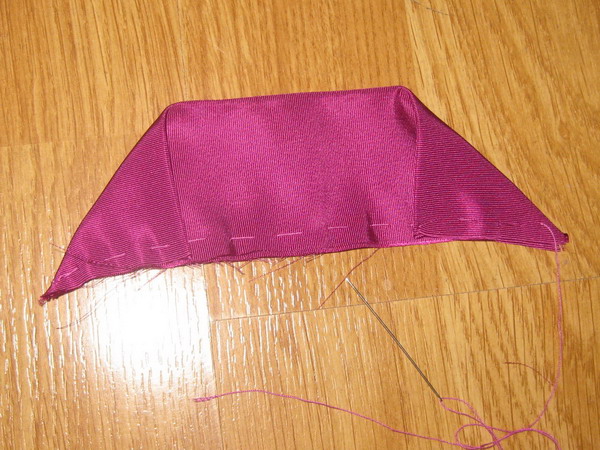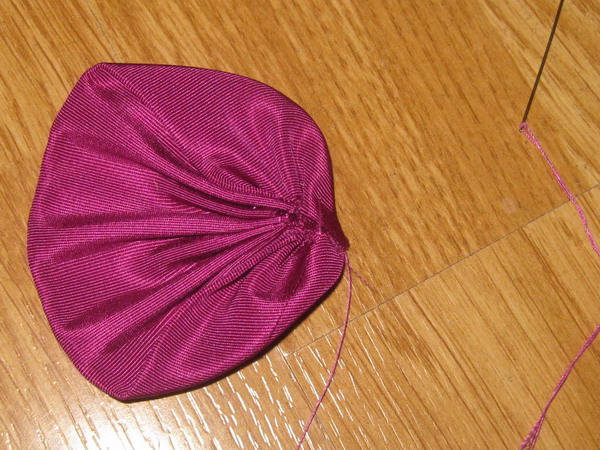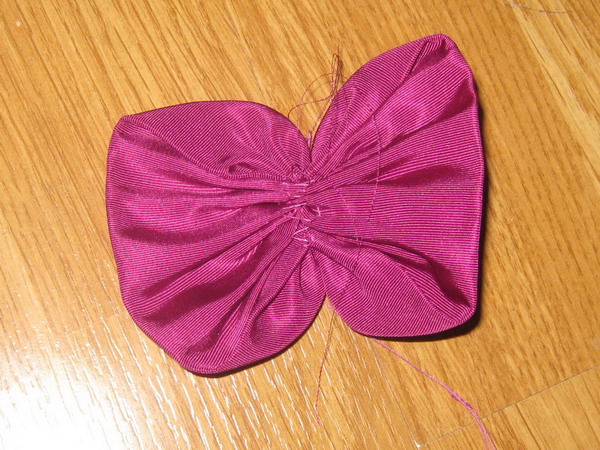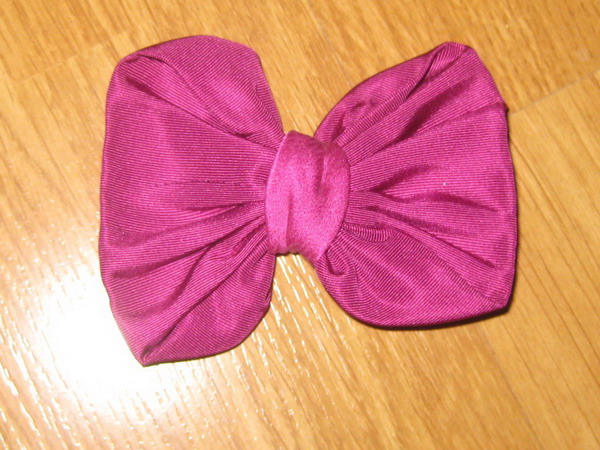A note: I want to eventually integrate my blog and website. I think--just think--I want to move dresses from there to here as part of that. And then I'll use some sort of index on my site or here. I'm not sure! I am going to backdate any that I do until the day after I started this blog. We'll see how it goes!
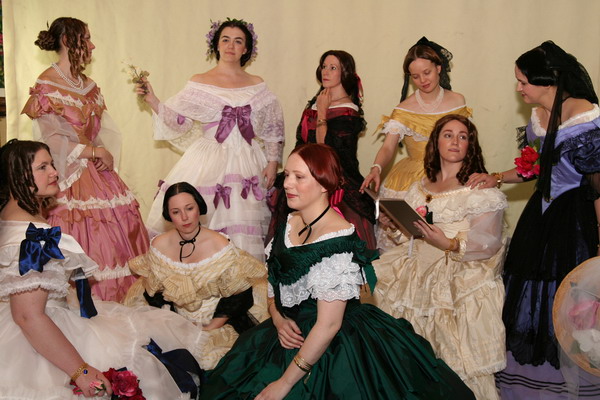
>
For Costume Con 26 in San Jose, a group of us decided to recreate Wintehalter's portrait of the Empress Eugenie of France and her maids of honor. I portrayed the Baronne de
Malaret. Our group won best in show at the historic masquerade. More can be read about the project at
Demode.
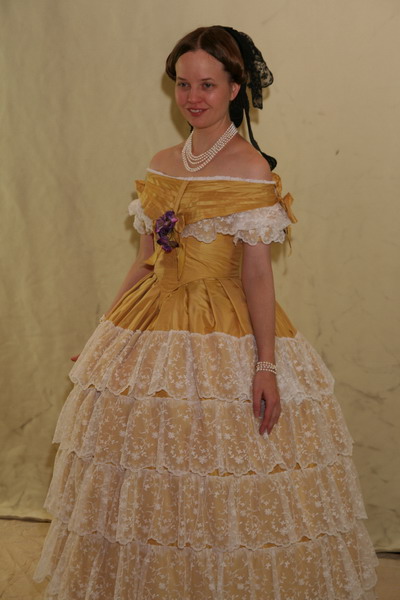
My dress is made of yellow silk taffeta from LA Fred's Fabric in the Garment District and lined with white polished cotton from
Payless Fabric. It's trimmed with miles of lace which I bought from an eBay seller who sadly has closed her shop.
It's boned at the center back, which laces shut, and the center front. I used the same pattern I use for all of my mid century bodices, which started out as the 1870s day bodice
in
Period Costume for Stage and Screen. I love having a bodice base!
My dress is completely hand sewn, as are all of the underthings except the corset. I'm wearing it over a chemise, corset, drawers, underpetticoat, hoop, and petticoat. Though
some of these are already online, they can all be found on the
underthings page for this dress.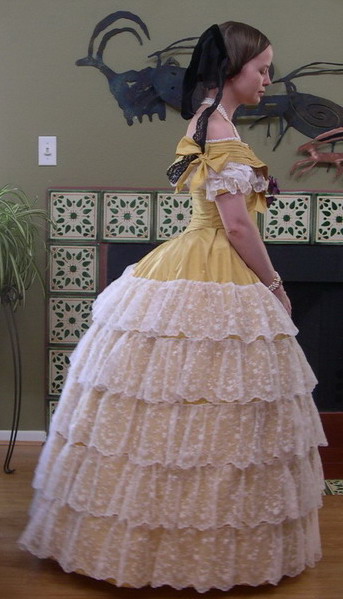
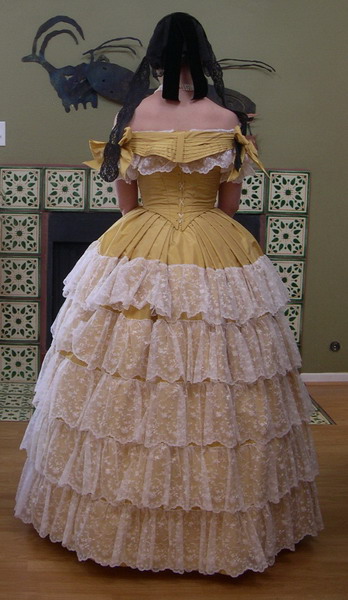
The side and back views. Though the portrait does not show what's happening with the skirt on this dress, I decided to go with just lace flounces. The top flounce is quite short, and it seemed like flounces of a similar length would be pretty. Each flounce is gathered over a cord. I left a little space between each flounce, as I had seen that in several originals and liked it.
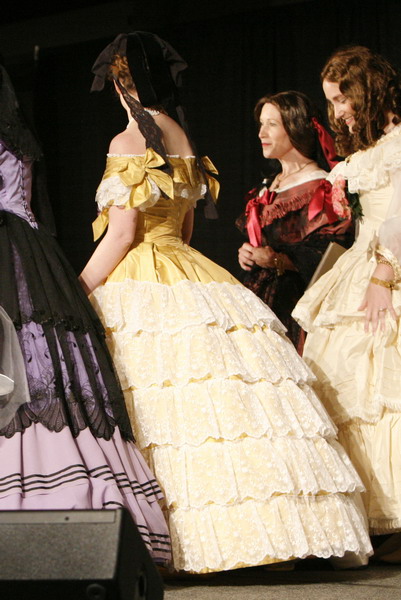
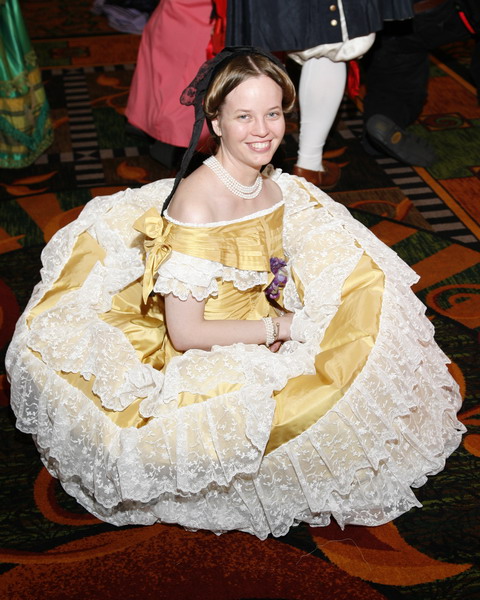
Two pictures of the dress in action. On stage, you can see how easily the hoop can be pushed back. The lightness of the layers is obvious in the picture on the floor. The silk
and lace are very light and really make a dress that has a lot of movement.
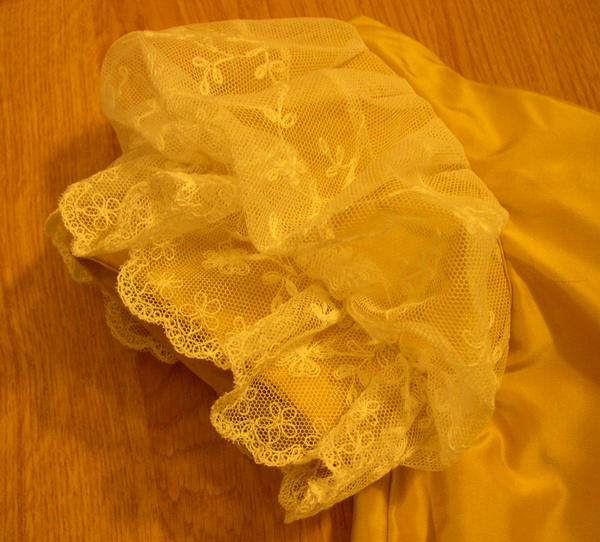
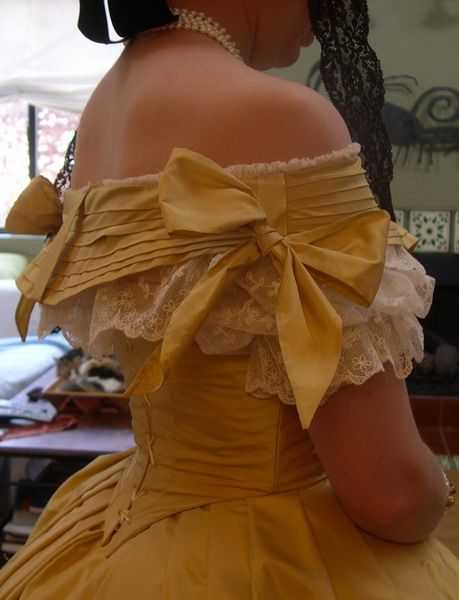
The sleeve is made of a short yellow sleeve with a puff of lace over it. The lace wasn't long enough as is, so I lengthened it with a little cotton net. The bertha then covers the top of the sleeve so this doesn't show.
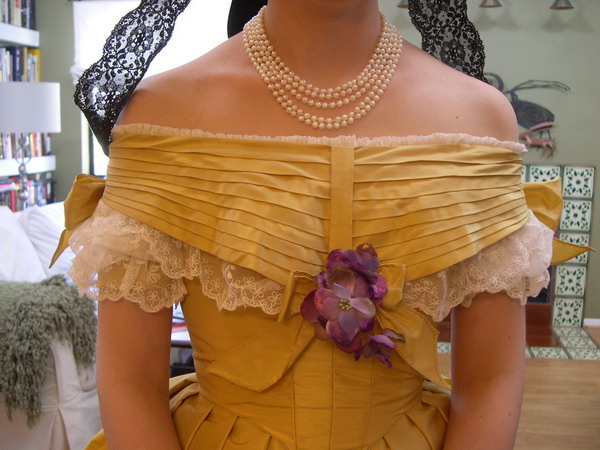
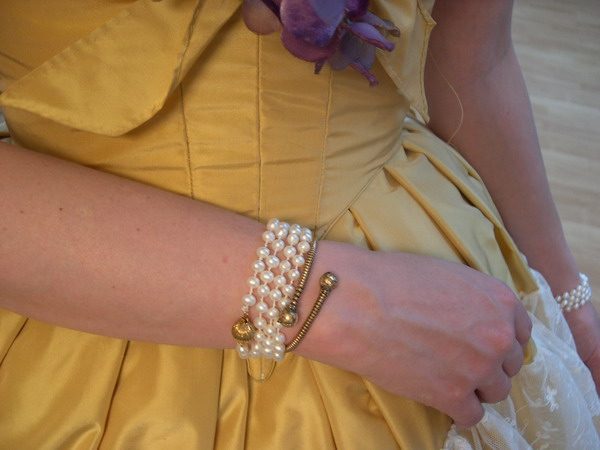
I made the pearl necklace and pearl bracelets for the dress. I bought the gold bracelet on eBay. I have since found a matching one, though it does need to be repaired!
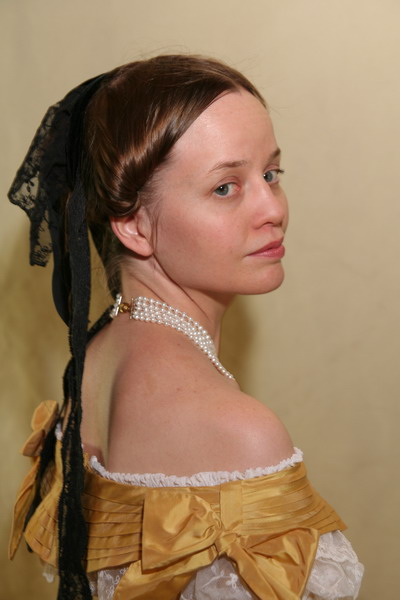
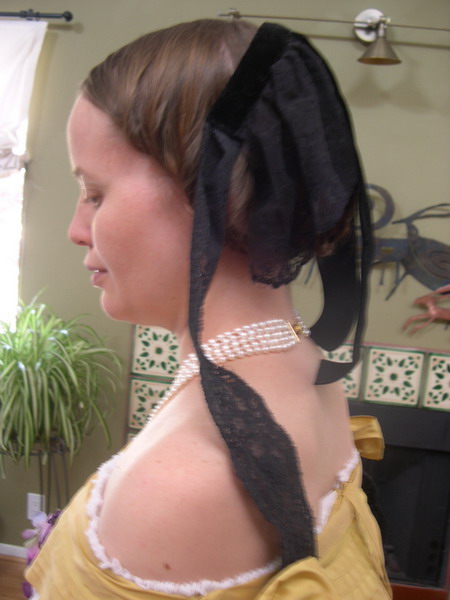
Two views of my lace cap. It's based off a cap in the MFA and made of velvet ribbon and lace mounted on a wire frame. The lace in back is the same as the lace on the skirt.
I dyed that along with the lace for the lappets. While the picture on the right shows a little more of it, the picture on the left shows it with a slightly higher hairstyle,
which I think makes it look better.
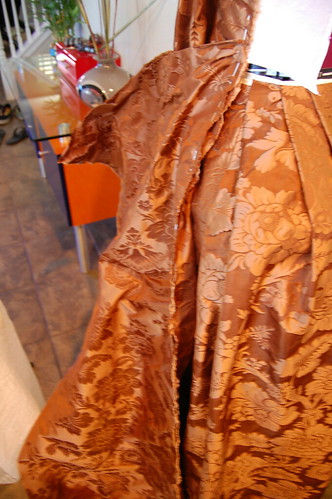

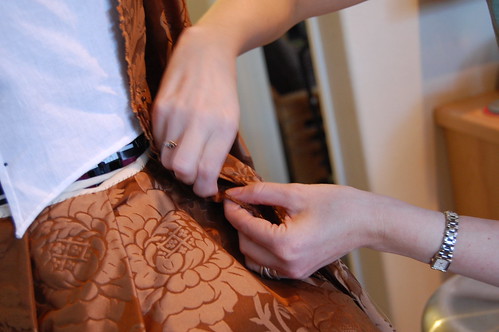
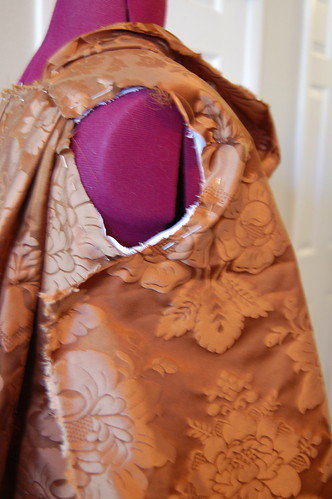
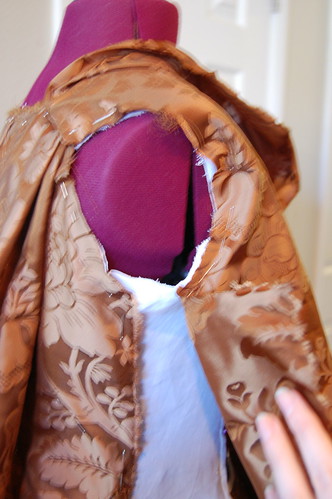

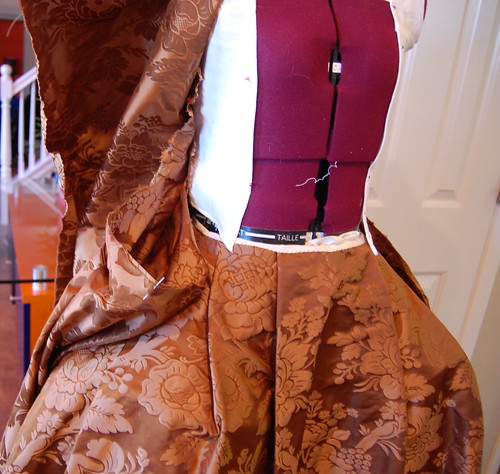
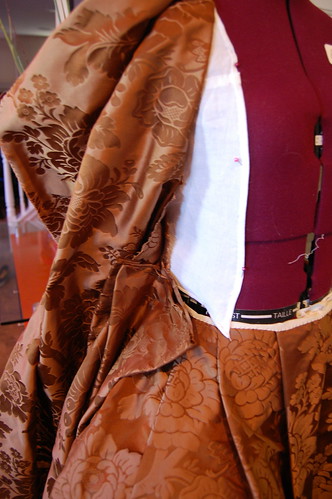
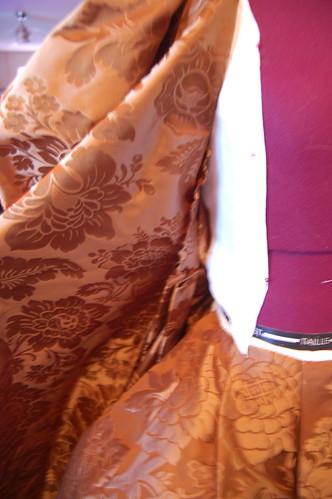
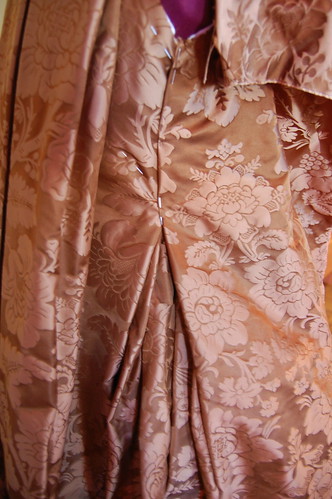

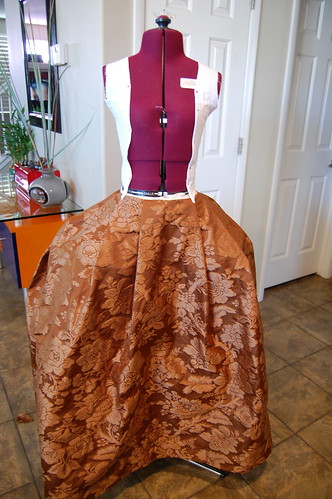
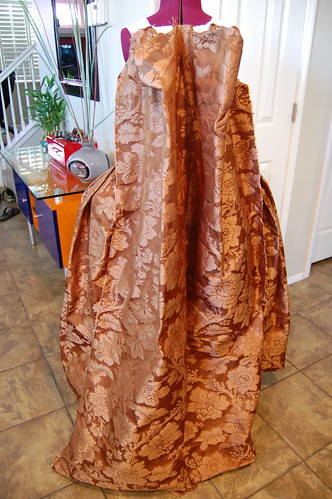

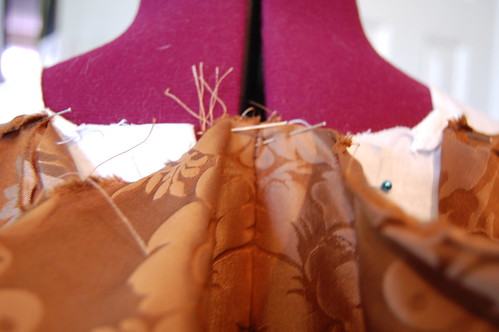




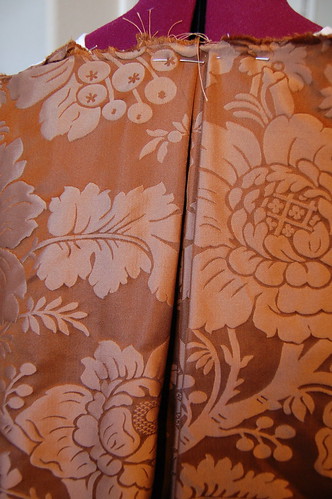
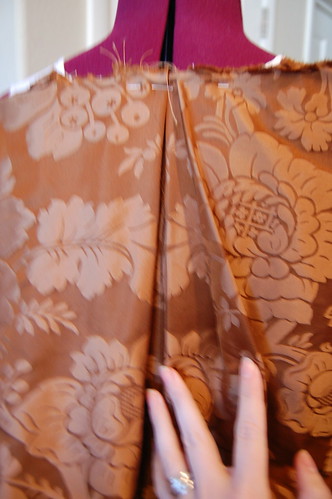
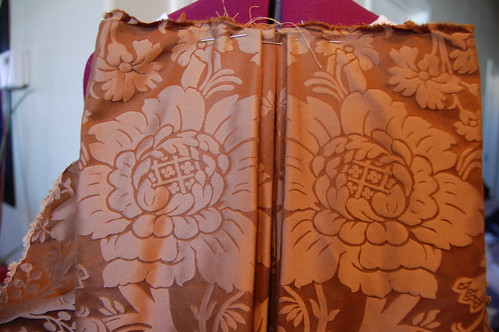

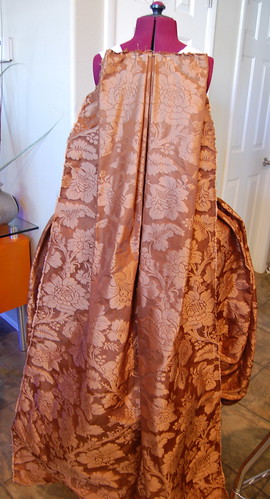

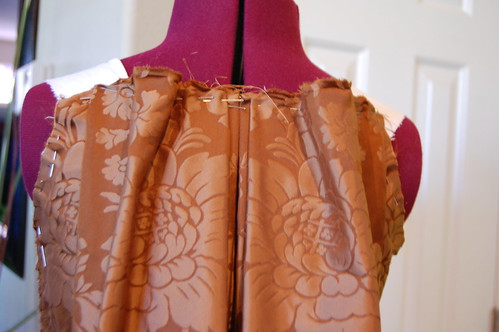
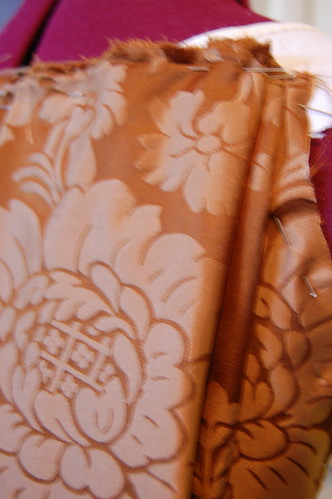
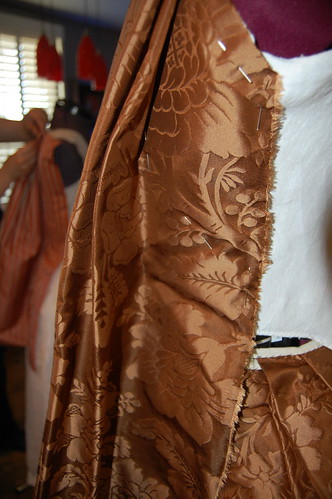
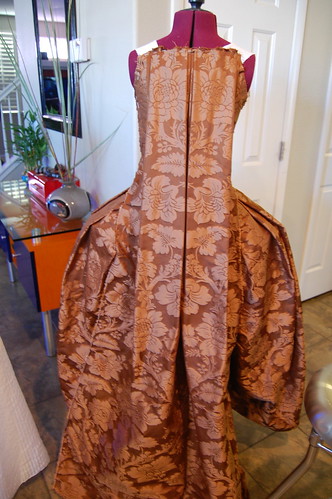
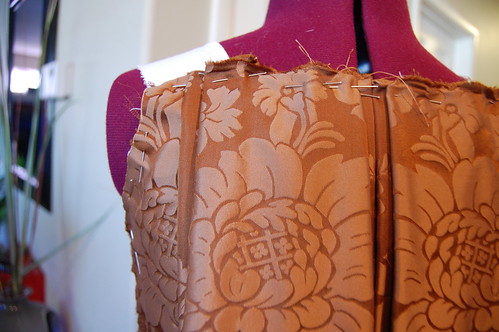
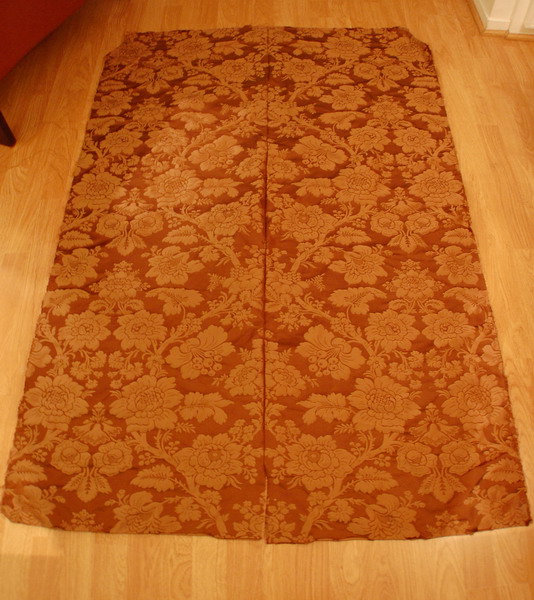
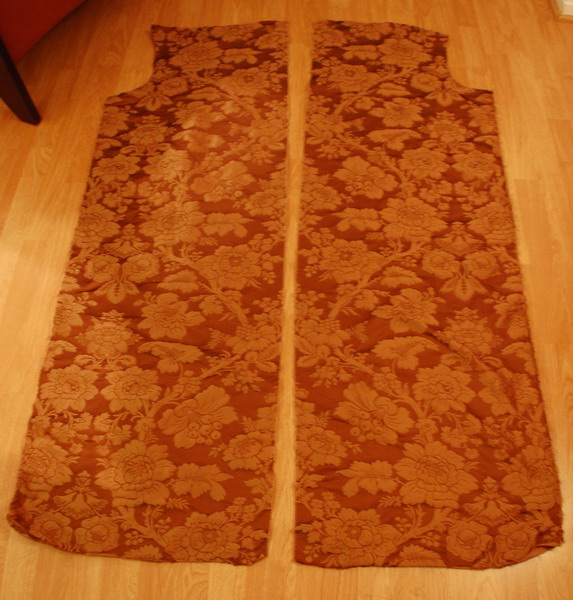
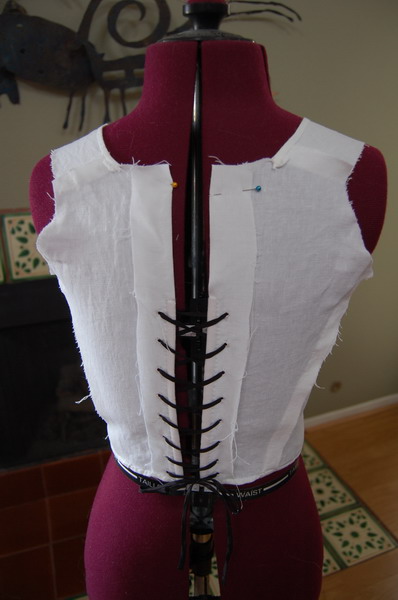
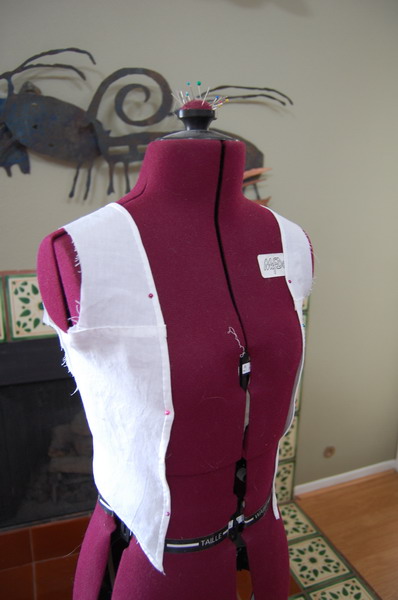
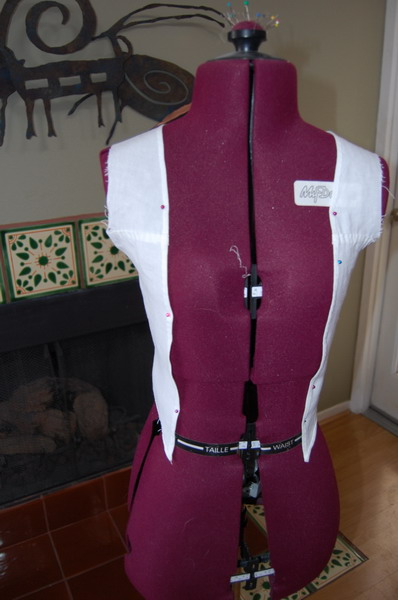
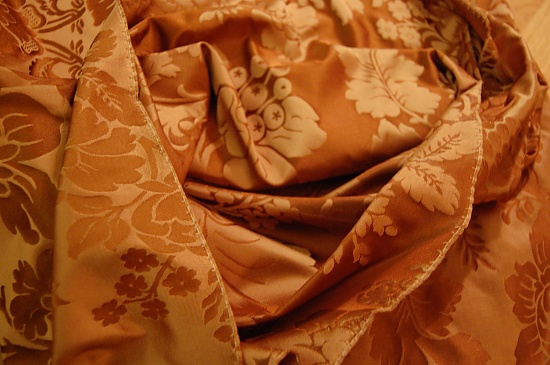
 >
>










